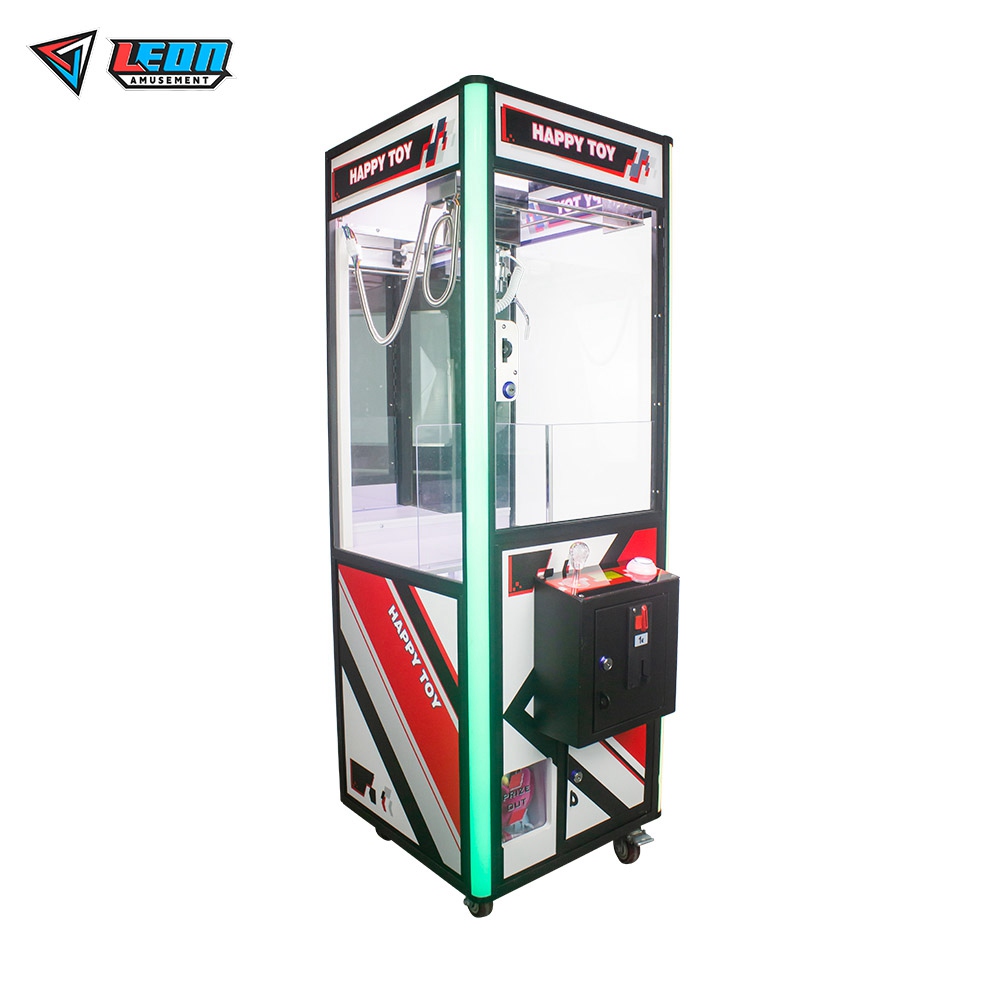A standard claw machine typically consumes between 100 to 200 watts of power during operation. In standby mode, the consumption drops to around 50 watts. On average, if the machine runs for 8 hours a day, it will use approximately 0.8 to 1.6 kWh daily, translating to roughly 24 to 48 kWh per month. Power usage may vary depending on the machine’s size, lighting, and motor power. To reduce energy costs, consider using energy-efficient LED lighting and scheduling the machine to turn off during non-operational hours.
Table of Contents
ToggleBasic composition and power consumption needs
The components of a claw machine that raise and lower simultaneously take up most of the power. A claw machine is generally made of a cabinet, mechanical arm, power system (input and output current), display screen, lighting system, and control panel. In action, each section requires a certain quantity of electrical power. Power is needed to support the claw action of the mechanical arm, the movement of the mechanical arm, the display screen for showing game status and scores in real-time, and the lighting system for decoration effects to attract players. The control panel, as the control center of the claw machine, is also an important part of electricity consumption.
Because the power of these components varies, data shows that the total power for a claw machine typically ranges from 100 to 300 watts. For example, a basic claw machine with no special added electronics, such as extra lighting effects or sound systems, may have around 150 watts of power in the normal configuration; high-end models can go from about 200 watts to even more, due to possible additions like lights, sounds, or HD video displays.

Power consumption calculation and influencing factors
It is very important to understand the relationship between power and running time of a claw machine to clarify how much it consumes. For instance, a 150-watt claw machine consuming power in one day will use about 1.2 kWh if working for around eight hours each day. If calculated this way, a claw machine could use 36 kWh of electricity every month (or around 432 kWh annually).
A claw machine is not the same as a light bulb and will use varying levels of electricity depending on different variables. The claw machine you opt to use (make and model; set-up) influences its basic power. Regular machines will be less power-hungry than those outfitted with high-power light systems and sound effects. Secondly, the frequency and duration of use of a machine directly indicate electricity usage. For claw machines that operate throughout all hours of several days, power consumption will naturally be higher. On the other hand, machines that are in standby mode for long periods will consume less power. Furthermore, the internal components of your claw machine will impact how much power it pulls. In case of component failure or aging, there is a possibility of increased electricity usage.

How to effectively reduce the power consumption
Reducing the power consumption of claw machines allows operators to lower operating costs and extend the service life of the machines. One key way to do this is by selecting energy-efficient claw machines. These machines are usually equipped with more efficient power systems and LED lighting, allowing them to maintain a good gaming experience while reducing power consumption.
Additionally, scheduling the machines to work in an evenly spread manner is key to reducing energy consumption. For claw machines during low traffic periods, the time they are turned on can be reduced or they can be put in standby mode to help reduce unnecessary power consumption. Regular maintenance and inspection of the claw machines can ensure that each part runs normally and helps prevent added power consumption due to malfunctions. For high-end models equipped with a large number of lights and sound effects, the reduction in power consumption can be achieved by adjusting the brightness of all or part of these lamps.
Power consumption and environmental issues
Of course, we also have to consider the environmental impact that claw machines may cause when examining their power consumption. A single claw machine may not use a lot of electricity, but tens of thousands running simultaneously can lead to a significant amount of energy consumption. Therefore, how to provide good entertainment while also saving energy and reducing emissions is worth exploring.
Claw machine manufacturers can make machines with more environmentally friendly materials and technologies. Using claw machines powered by renewable energy or machine casings that can degrade automatically would limit environmental damage. Meanwhile, operators can advocate for gaming modes that are friendly to the environment, such as using virtual toys instead of physical ones, which contributes to resource saving and environmental protection.








